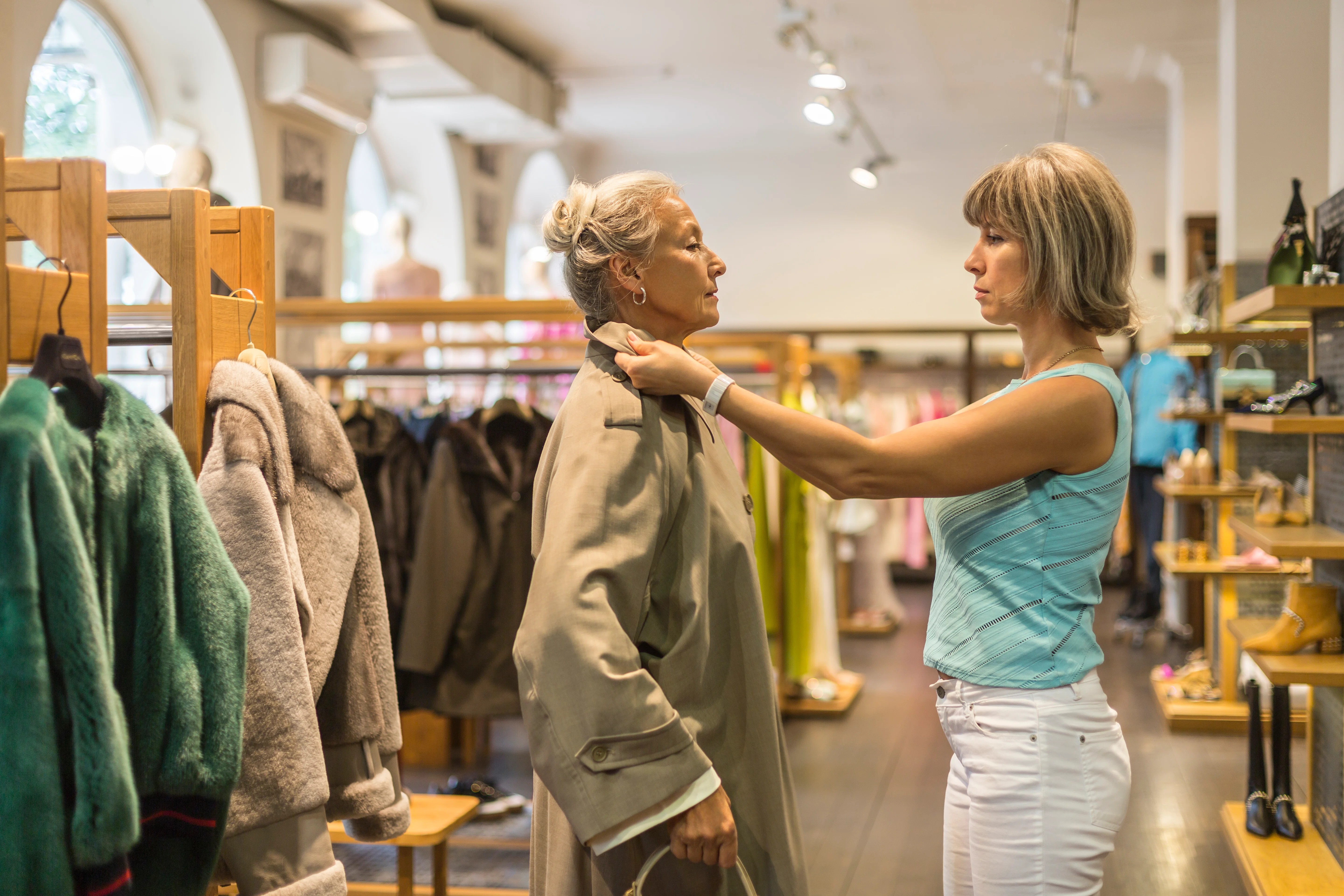Fashion Consumer Behavior - Key Insights For Fashion Brands
This is a concise guide to the factors influencing clothing and accessory purchases. It explores individual preferences, social trends, economic factors, and more, providing practical advice for fashion brands. Whether you're a fashion enthusiast or a brand strategist, this article offers valuable insights to navigate the dynamic world of fashion consumer behavior.effectively.
Author:Elisa MuellerReviewer:James PierceFeb 21, 20243.5K Shares60.4K Views

In the fashion world, consumer behavior is very important. Where every choice is a brushstroke on the canvas of personal style. In this article, we'll explore the factors that influence how people shop for clothes and accessories, offering valuable insights for fashion brands. From individual preferences to social trends and economic considerations, we'll uncover the secrets behind why we buy what we wear. So, let's dive in and discover the view of Fashion Consumer Behaviortogether!
Personal Preferences
Every individual has a distinct set of personal preferences that influence their fashion choices. These preferences are shaped by a variety of factors including personal style, comfort preferences, cultural influences, and lifestyle needs. Some individuals may prefer minimalist and understated designs, while others may gravitate towards bold patterns and vibrant colors.
Similarly, preferences for certain fabrics, fits, and styles can vary greatly among consumers. By understanding the diverse range of personal preferences among consumers, fashion brands can tailor their product offerings to cater to different segments of their target audience effectively. This may involve offering a wide variety of styles, sizes, and options to accommodate the diverse preferences of consumers.
Additionally, brands can utilize market research, customer feedback, and trend analysis to gain insights into emerging preferences and adapt their offerings accordingly.
Social Influences
Social influences play a significant role in shaping fashion consumer behavior. These influences can come from various sources including peers, family members, celebrities, and social media platforms. Consumers may be influenced by the fashion choices of their friends or family members, leading them to adopt similar styles or trends.
Similarly, celebrities and influencers often have a considerable impact on consumer preferences, as their fashion choices are widely publicized and admired. Social media platforms such as Instagram, TikTok, and Pinterest also play a crucial role in shaping fashion trends and influencing consumer behavior. Consumers often look to these platforms for inspiration, trend forecasts, and product recommendations.
Brands that leverage social influences effectively can build stronger connections with their target audience and increase brand loyalty. This may involve partnering with influencers, engaging with followers on social media, and creating content that resonates with their audience.
Economic Considerations
Economic factors such as price, quality, and value for money are important considerations for fashion consumers. While some consumers may be willing to splurge on high-end designer labels for their perceived prestige and craftsmanship, others may prioritize affordability and seek out budget-friendly options. Additionally, consumers often assess the value proposition of a product based on factors such as durability, versatility, and brand reputation.
A consumer may be willing to invest in a higher-priced item if they believe it offers superior quality and longevity. On the other hand, they may opt for a more affordable alternative if they perceive the value proposition to be lower. Understanding the economic preferences of consumers enables fashion brands to position their products effectively and cater to different segments of the market while maintaining profitability and brand integrity.
This may involve offering a range of price points, implementing promotional strategies, and highlighting the value proposition of their products.
Brand Loyalty
Brand loyalty is a key driver of fashion consumer behavior. Consumers often develop strong attachments to brands that resonate with their values, preferences, and lifestyle. Factors such as brand reputation, perceived quality, and consistency in style contribute to cultivating loyalty among consumers.
A consumer may be loyal to a particular brand because they trust its commitment to sustainability, admire its innovative designs, or appreciate its customer service. Building brand loyalty requires brands to focus on building trust and fostering emotional connections with their audience. This may involve communicating brand values effectively, delivering consistent product experiences, and engaging with customers on a personal level.
Brands that prioritize building long-term relationships with their customers can establish a loyal customer base and drive repeat business, even in a competitive market landscape.
Shopping Experience
The shopping experience significantly influences fashion consumer behavior. Whether in-store or online, every interaction shapes consumer perceptions and preferences. Factors such as customer service, convenience, and the ambiance of retail environments impact the overall shopping experience.
A positive shopping experience may involve friendly and knowledgeable staff, easy navigation of the store or website, and a pleasant atmosphere. On the other hand, a negative shopping experience may result from long wait times, confusing layout, or unresponsive customer service. Fashion brands that prioritize enhancing convenience, providing personalized recommendations, and creating engaging retail environments can differentiate themselves and drive customer satisfaction and loyalty.
This may involve investing in employee training, optimizing the online shopping experience, and designing store layouts that encourage exploration and discovery. By focusing on providing exceptional shopping experiences, brands can create lasting impressions on their customers and increase loyalty and advocacy.
Psychological Factors
Psychological factors play a crucial role in fashion consumer behavior. Clothing choices can evoke a range of emotions, from confidence and empowerment to self-expression and belonging. Consumers often use fashion as a means of expressing their identity and communicating their values to the world.
A consumer may choose to wear a certain outfit to convey professionalism in a professional setting, express creativity and individuality in a social setting, or show support for a cause they believe in. Fashion brands that understand the emotional resonance of their products and marketing campaigns can create deeper connections with their audience, driving engagement and loyalty. This may involve leveraging storytelling, imagery, and messaging to evoke desired emotions and align with consumer values.
By tapping into the psychological factors that drive consumer behavior, brands can create meaningful connections with their audience and differentiate themselves in a competitive market landscape.
Trends And Fashion Cycles
Fashion is inherently cyclical, with trends constantly evolving. Consumers are influenced by seasonal trends, runway collections, and cultural movements, leading to shifts in their purchasing behavior over time. A trend may emerge from a popular fashion show, gain traction on social media, and eventually become mainstream as celebrities and influencers adopt it. Fashion brands that stay attuned to emerging trends and adapt quickly to changing consumer preferences are better positioned to stay relevant and capture market share.
This may involve conducting trend research, attending fashion events, and collaborating with designers and influencers to create trend-driven collections. By forecasting trends and innovating their product offerings, brands can maintain a competitive edge in the ever-changing fashion landscape.
Sustainability And Ethical Considerations
In an era of increasing environmental awareness, sustainability and ethical considerations are gaining prominence in fashion consumer behavior. Consumers are becoming more conscious of the environmental and social impact of their purchases, driving demand for sustainable materials, fair labor practices, and transparent supply chains. Fashion brands that prioritize sustainability and ethical values can appeal to a growing segment of socially-conscious consumers, positioning themselves as leaders in responsible fashion and driving positive change within the industry.
This may involve sourcing eco-friendly materials, reducing waste and carbon emissions, and ensuring fair treatment of workers throughout the supply chain. By aligning with consumer values and addressing sustainability and ethical concerns, brands can build trust and loyalty with their audience and contribute to a more sustainable future for the fashion industry.
FAQs About Fashion Consumer Behavior
What Factors Influence Fashion Consumer Behavior?
Understanding the various factors such as personal preferences, social influences, economic considerations, brand loyalty, and shopping experiences that shape fashion consumer behavior is crucial for brands to tailor their strategies effectively.
How Do Personal Preferences Affect Fashion Consumer Behavior?
Personal preferences play a significant role in driving fashion consumer behavior, as individuals choose clothing and accessories based on their unique tastes, style preferences, and lifestyle needs.
What Role Do Social Influences Play In Fashion Consumer Behavior?
Social influences, including peer pressure, social media trends, celebrity endorsements, and cultural norms, have a profound impact on fashion consumer behavior, often shaping purchasing decisions and influencing what individuals perceive as fashionable.
Why Is Brand Loyalty Important In Fashion Consumer Behavior?
Brand loyalty is essential in fashion consumer behavior, as consumers often develop strong attachments to brands that resonate with their values, preferences, and lifestyle. Building trust and connection with consumers can lead to long-term relationships and repeat business for fashion brands.
How Are Trends And Fashion Cycles Relevant To Fashion Consumer Behavior?
Trends and fashion cycles significantly influence fashion consumer behavior, with consumers seeking out the latest styles and trends. Brands that stay attuned to emerging trends and adapt quickly to changing consumer preferences can maintain relevance and capture market share in the dynamic fashion industry.
Conclusion
Fashion consumer behavior is paramount for brands aiming to succeed in the ever-evolving world of fashion. By grasping the intricacies of personal preferences, social influences, economic considerations, brand loyalty, and shopping experiences, brands can tailor their strategies to effectively connect with their target audience. From embracing sustainability to staying attuned to trends, the insights gained from comprehending fashion consumer behavior can guide brands towards creating products and experiences that resonate with consumers on a deeper level.
In essence, by recognizing the diverse factors at play and adapting accordingly, brands can position themselves for success in the dynamic and competitive landscape of the fashion industry.

Elisa Mueller
Author

James Pierce
Reviewer
Latest Articles
Popular Articles

